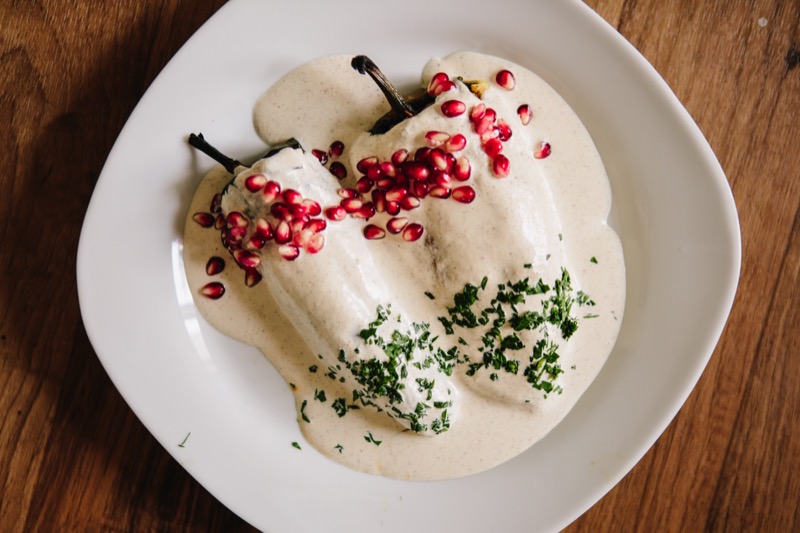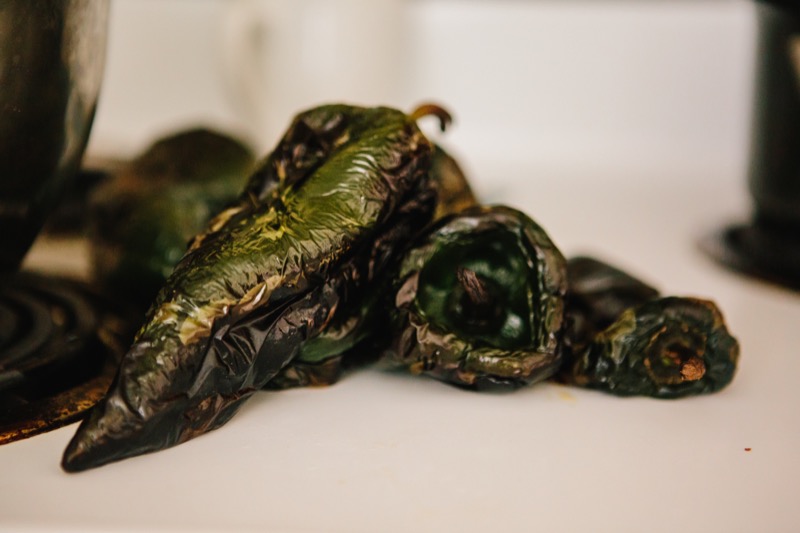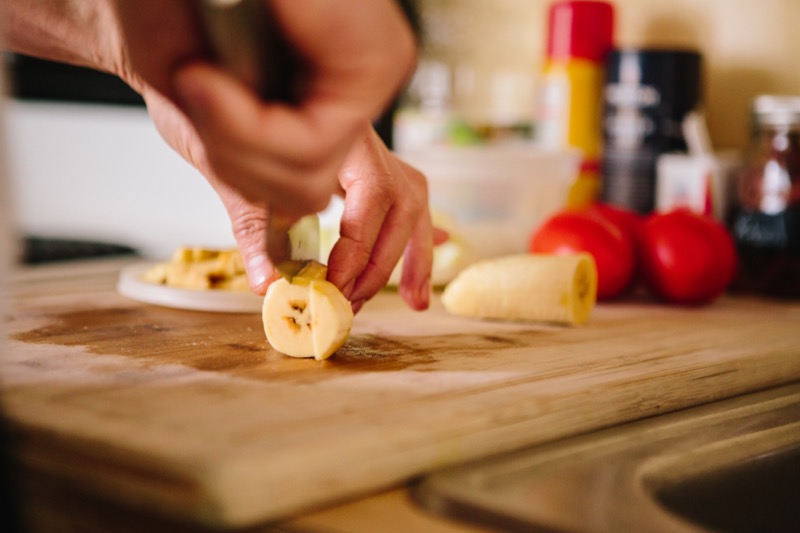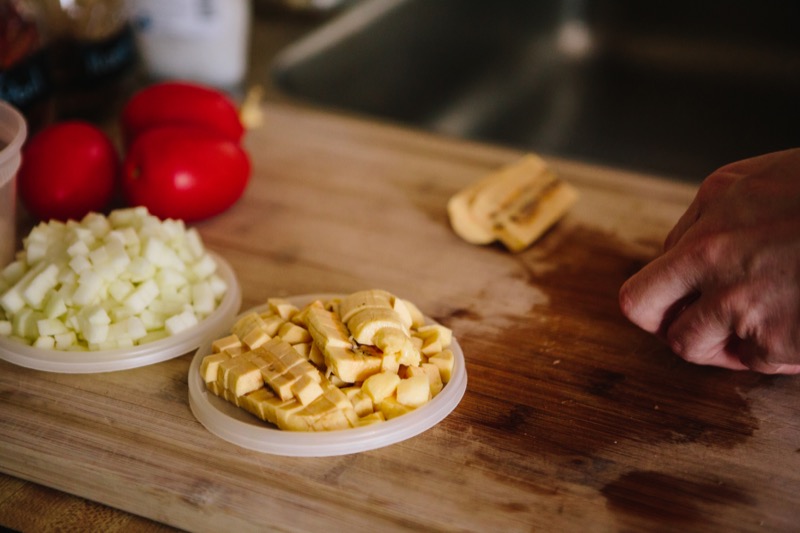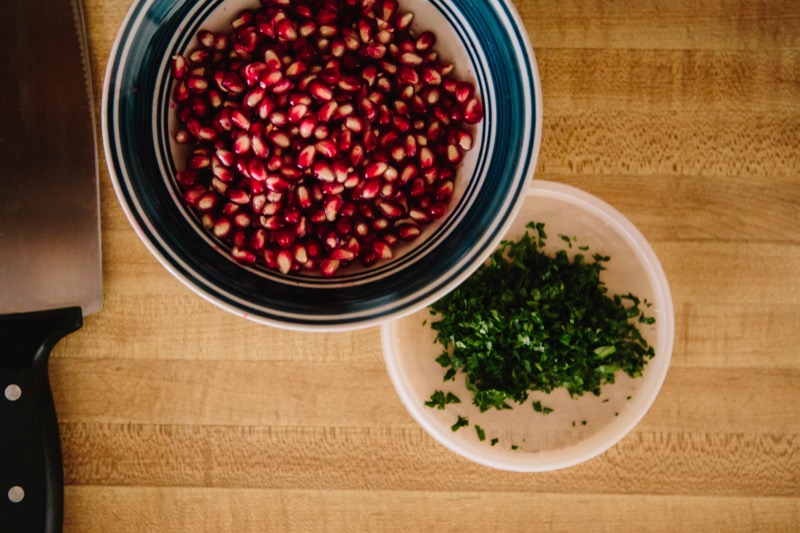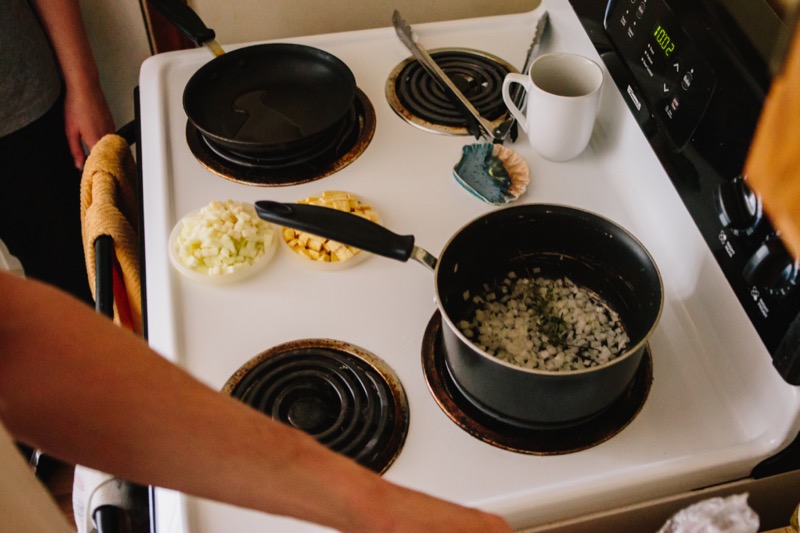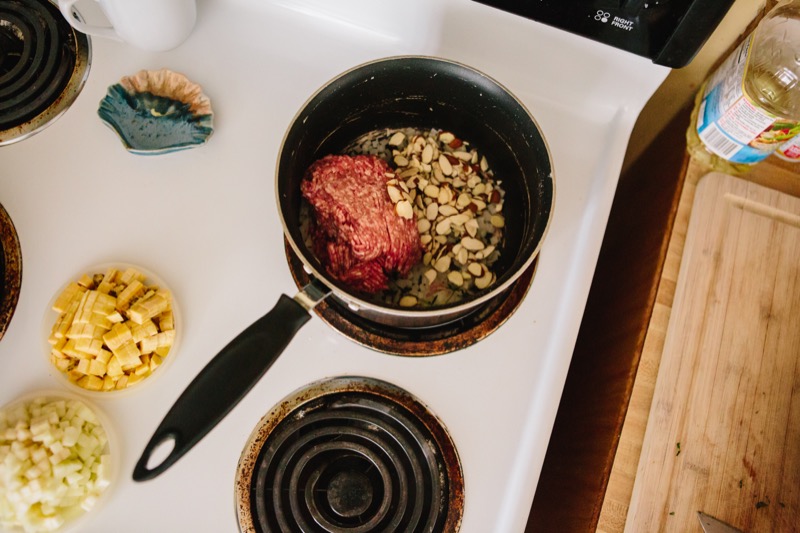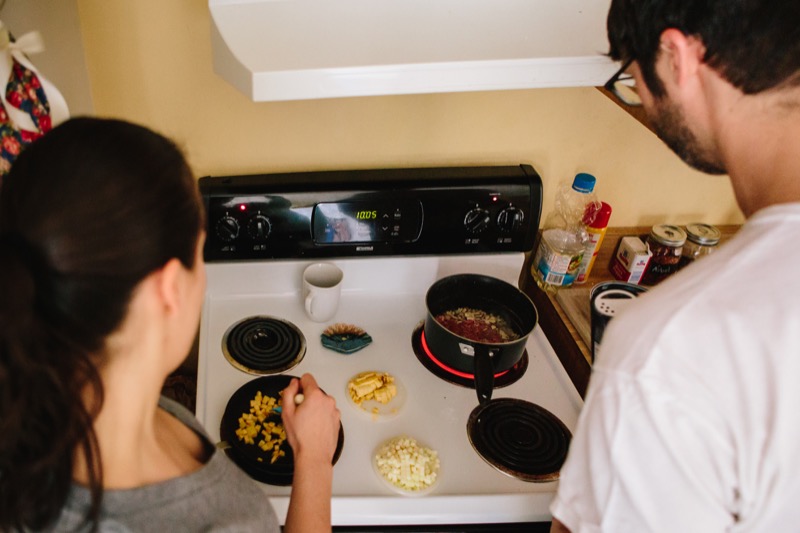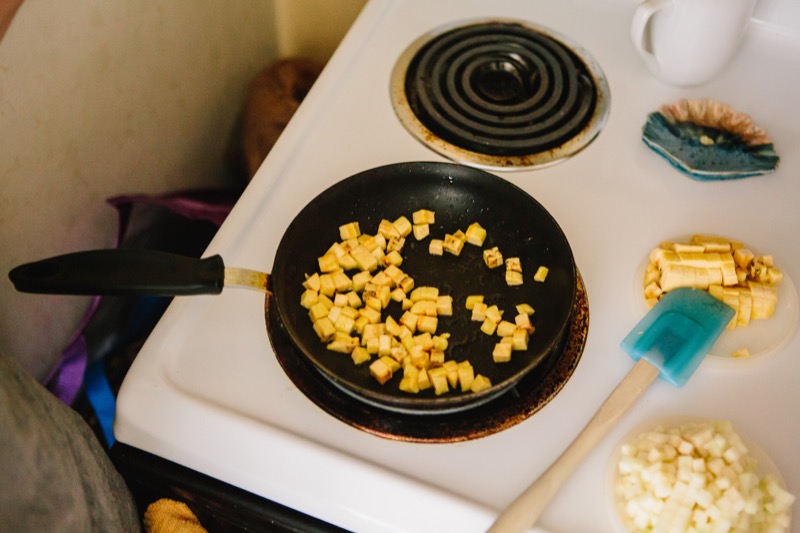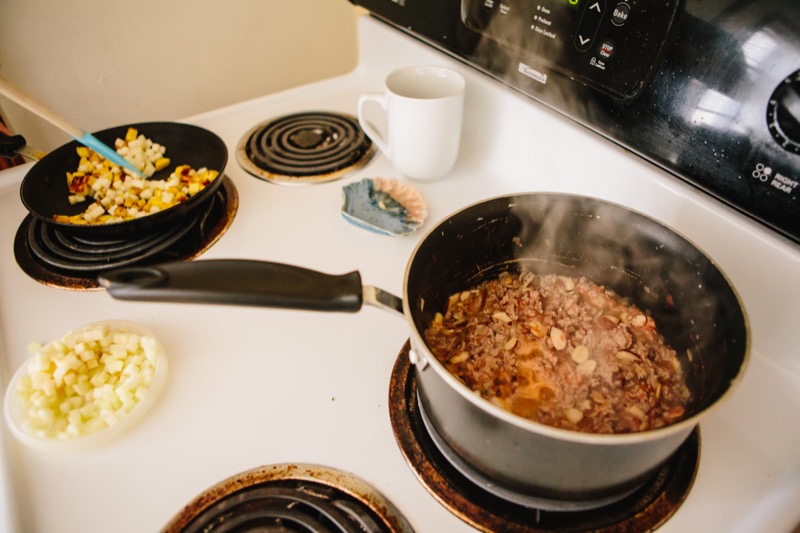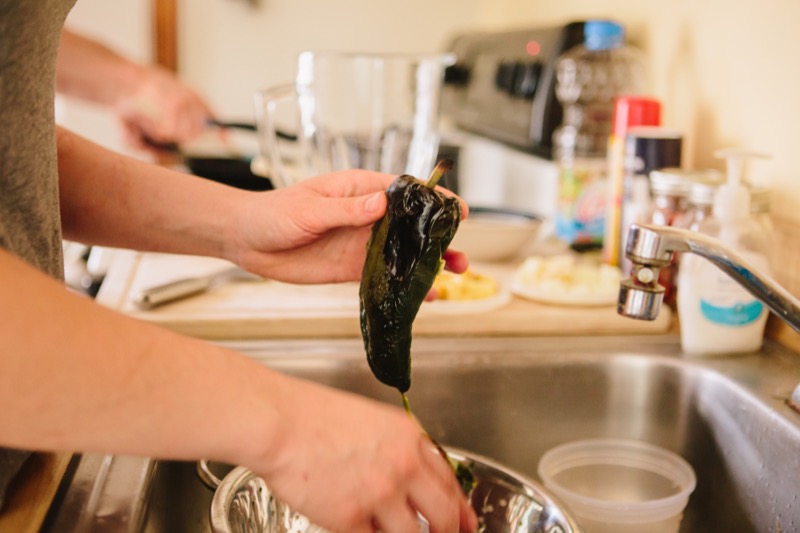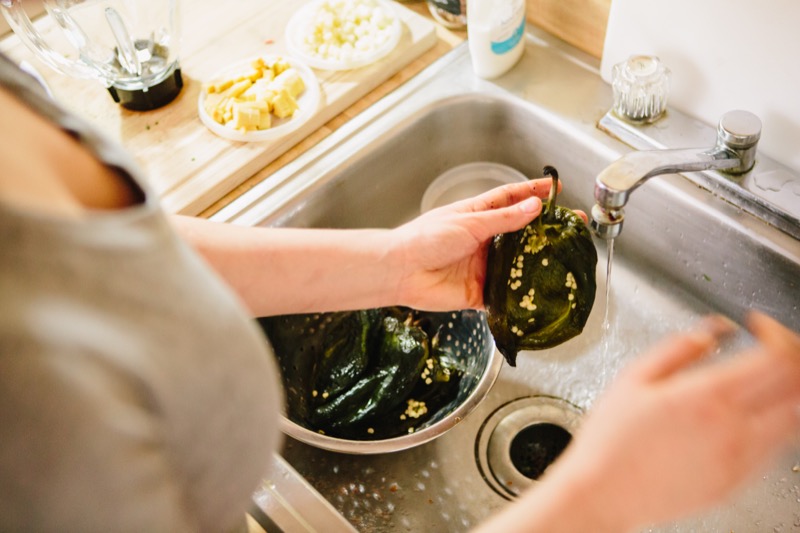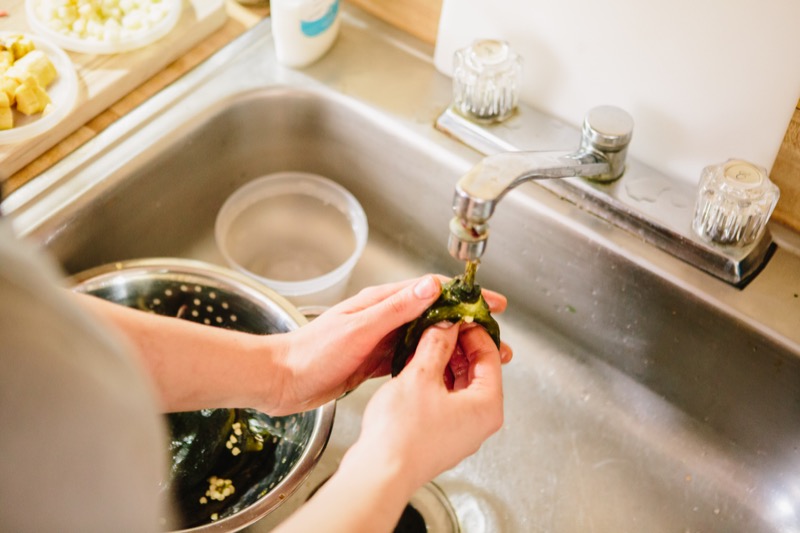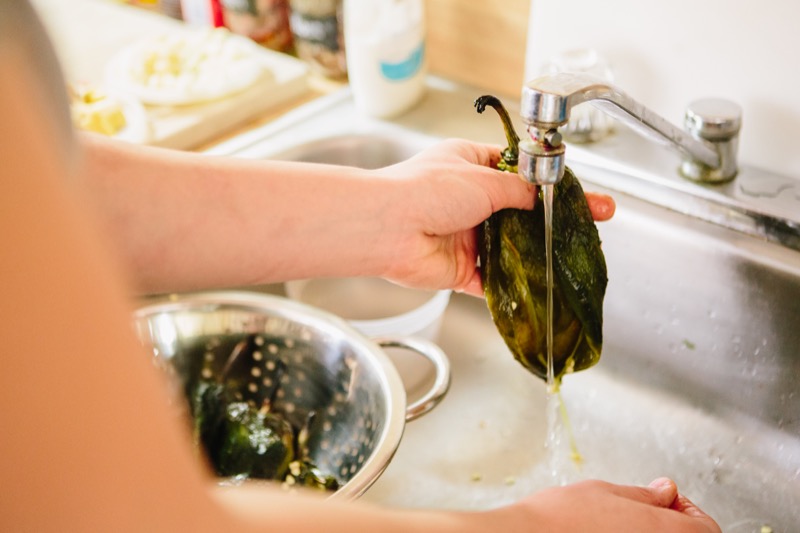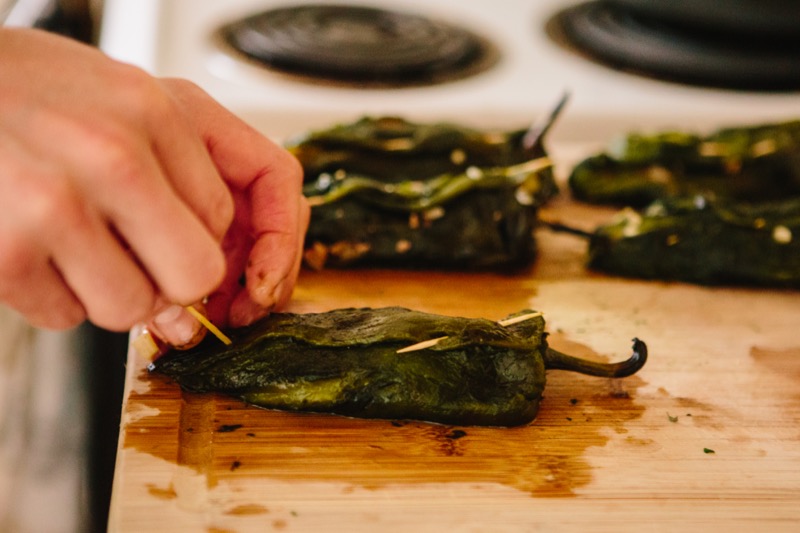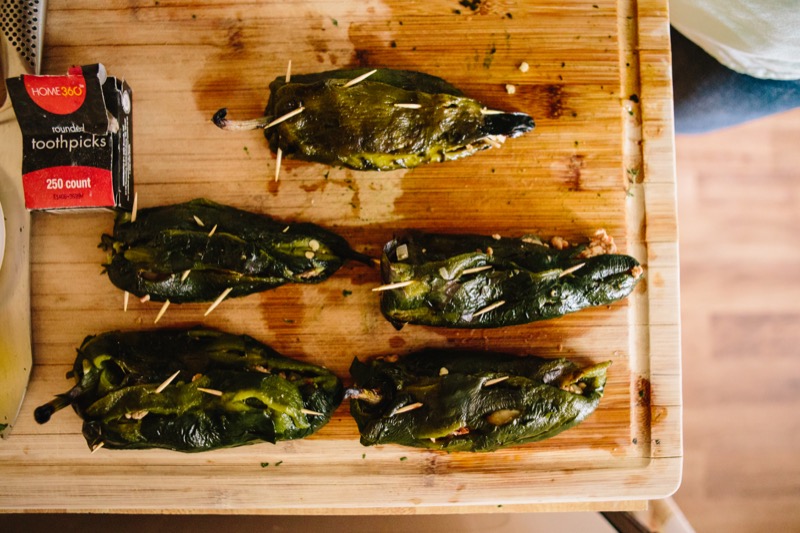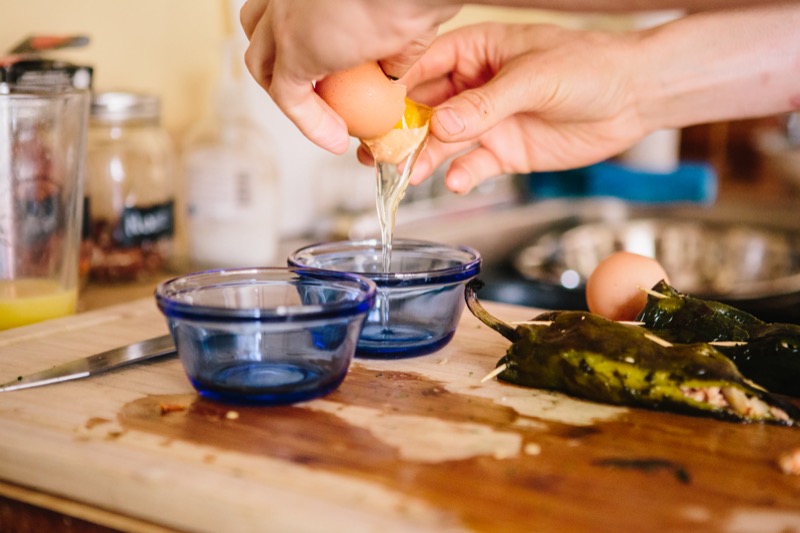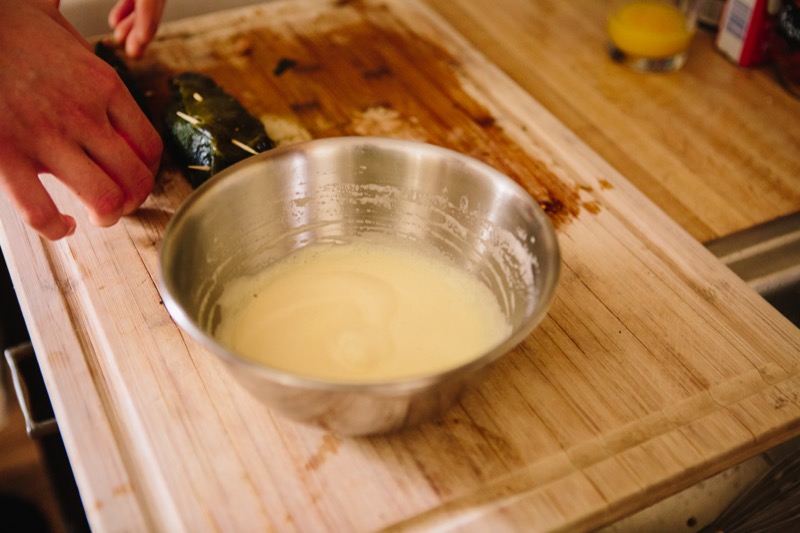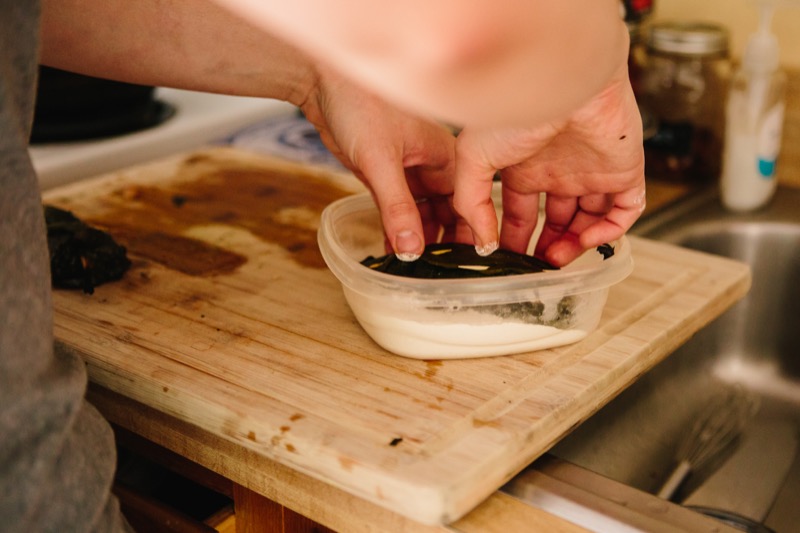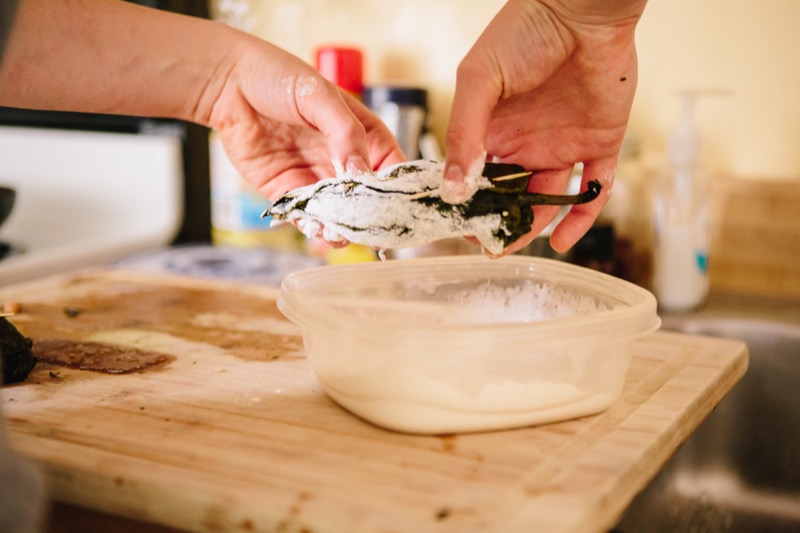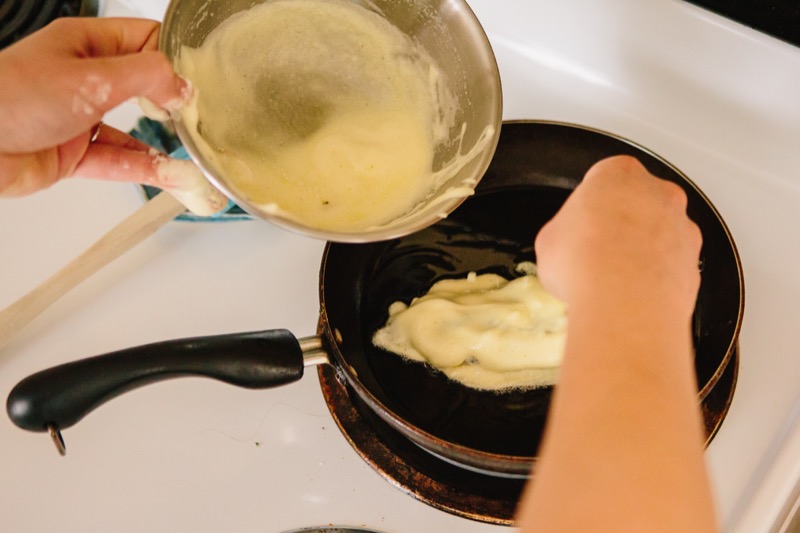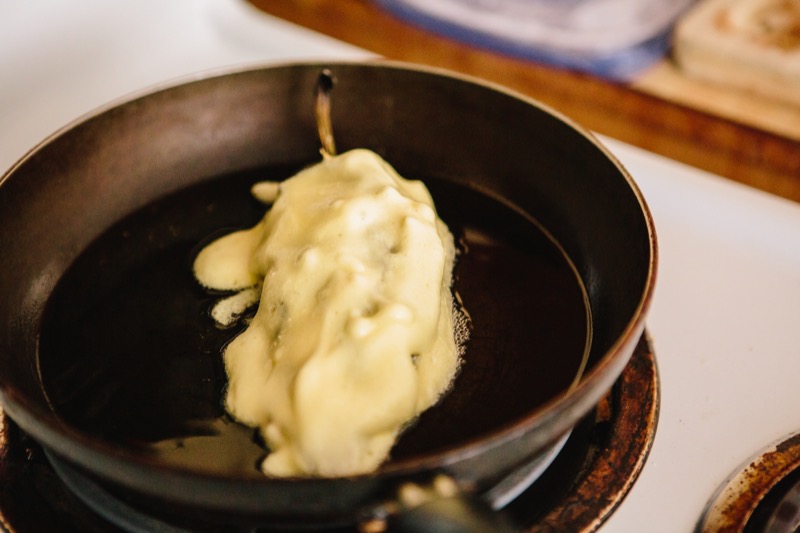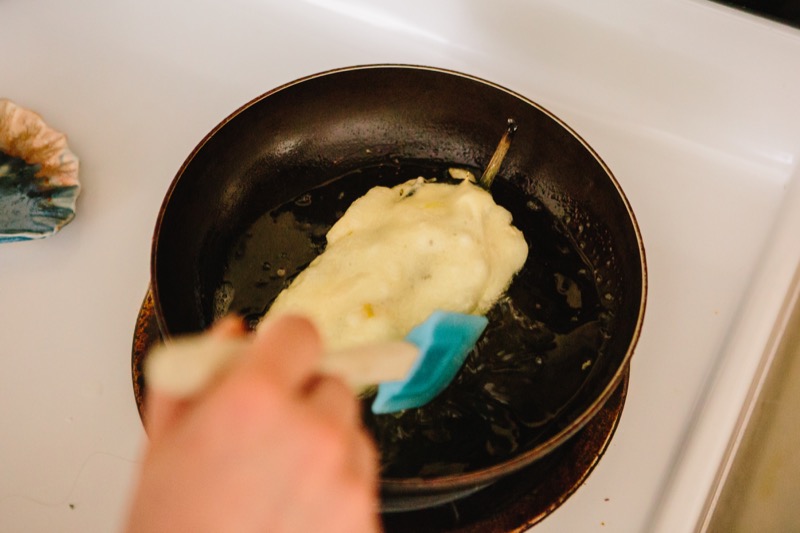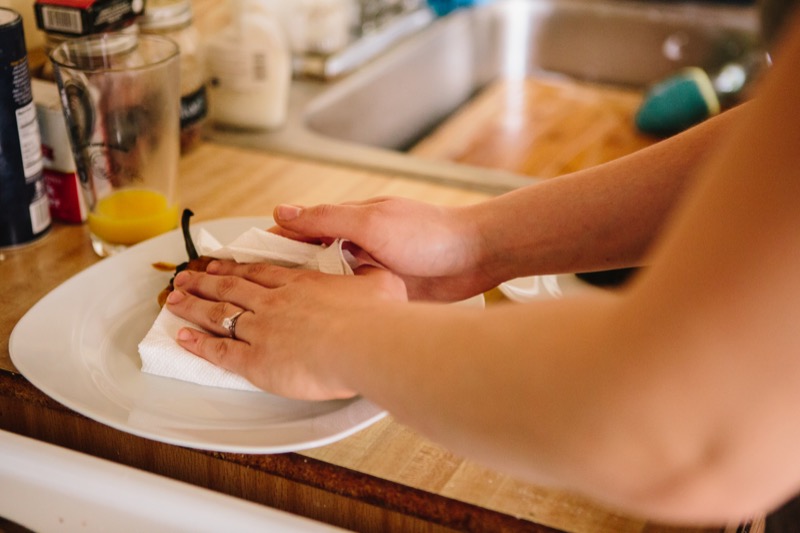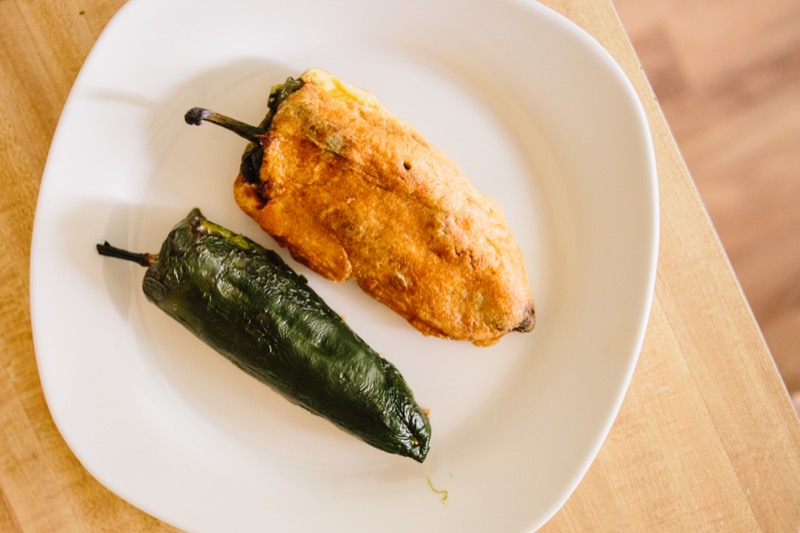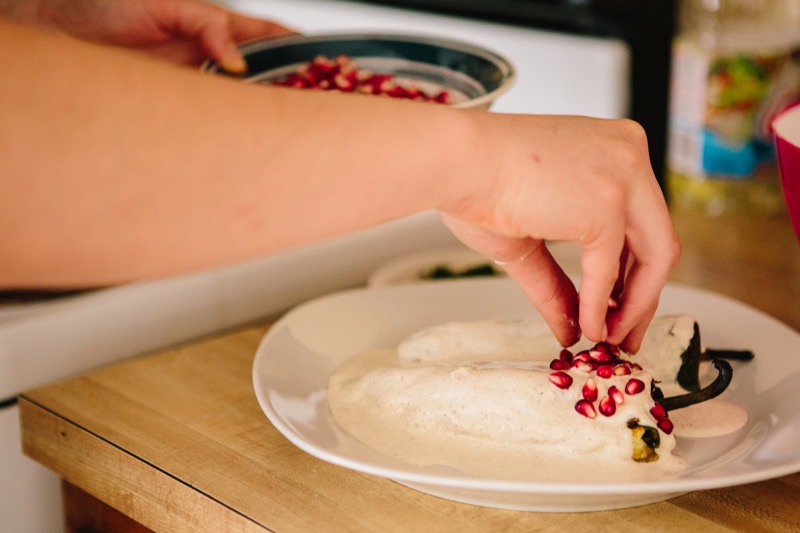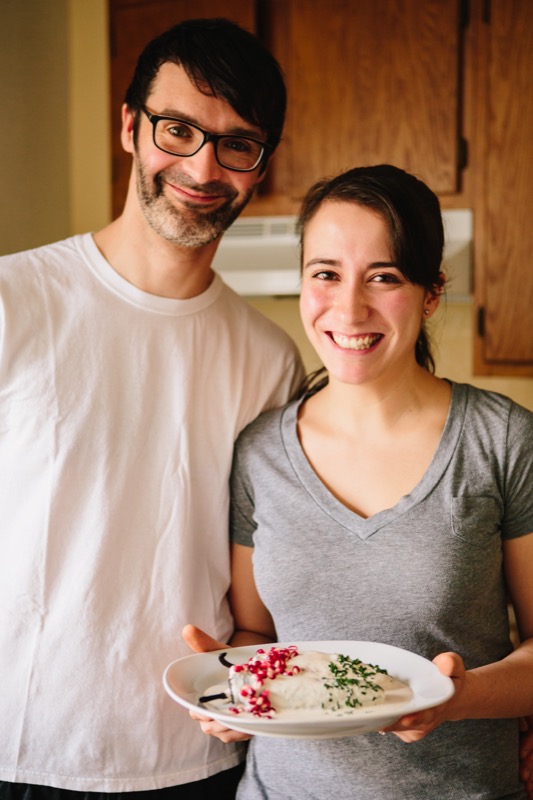Chiles en Nogada
As Yazmin Saraya from Mexico City, Mexico, taught Lindsay Sterling in Old Orchard Beach, Maine. Photography by Cindy Giovagnoli.
Makes: 20 stuffed poblano chiles, serves 6-8 as a full meal
Cooking time: 1.5-2 hours
Note: This dish can be deep fried or simply roasted. Pick your pleasure. Also, if you have an apron, this would be a great occasion to wear it.
Ingredients
For the stuffed peppers:
For deep-frying (omit this part if doing gluten-free):
1 cup white flour
8 eggs
3 cups frying oil
For the walnut cream sauce:
Garnishes:
2 pomegranates
1 bunch fresh parsley
Equipment
Instructions
1. Broil the poblanos on a sheet pan on the top rack in the oven and broil. Keep on eye on them. Once the flesh is blistering (and colored brown or black) turn the peppers. Repeat until all sides of peppers are blistered. Put the peppers immediately in a bowl and seal with plastic wrap to steam for fifteen minutes.
2. Prepare your other ingredients. Dice the onion, apple, plantain and keep in separate dishes. Pull the thyme leaves off the stems, discard the stems, and finely chop the leaves. Remove the skins from the garlic cloves and finely dice. Slice through the equator of the pomegranate. Hold the side that is revealing the seeds facing down into a bowl and whack she skin-side all over with the back of a soup spoon until all the seeds fall into the bowl. Repeat with the other half of the pomegranate. Remove any of the fruit lining that fell into the bowl.
3. Make the walnut cream sauce by simply blend all the ingredients for sauce in a blender until creamy and smooth.
4. De-skin and de-seed the peppers. Line a sheet pan with paper towels and put it next to the sink. Over the garbage disposal or a bowl in the sink, peel the skin off a pepper with a paring knife or your fingers. Make a slit down the length of the pepper body and gently remove the seeds without breaking the pepper. If you do, just pretend it's not broken and move on. It'll still be great! Rinse the cavity of the pepper under the faucet to remove any stray seeds. Put the cleaned pepper on the paper towel to dry. Continue with the rest of the peppers. Increase your speed and efficiency as you practice on the next 19 peppers. I got my time down to about one minute per pepper. Pat all peppers dry with a paper towel.
5. Make the filling. In a large saute pan on medium heat add a teaspoon of oil and saute the onion, thyme and garlic with a little salt, which helps them cook faster and enhances their flavor. Once onions are soft, add pork, cinnamon, oregano, and almond slices. Blend tomatoes in a blender. Once pork is cooked, add blended tomato and turn off heat.
6. In a small saute pan, add a teaspoon of oil and saute the plantains for about three minutes until they soften and turn gold. Put them on a plate to cool. In the same pan, add another teaspoon oil and saute the apples briefly. When they are warm but still crunchy transfer them to a plate to cool. When the pork has cooled, mix the apples and plantains into it. This is your filling.
7. Fill the peppers. Spoon the filling into each pepper cavity so that the pepper is full but still closes. If you are not deep frying your peppers, skip to #11.
(Yazmin stitched each pepper closed with 1-2 toothpicks, however, when I tested the recipe at home I found that I didn't like guests having to hunt through their meal to find toothpicks hidden under the fried batter and sauce. The next time I made the dish, I discovered that you don't need to use toothpicks. If you believe the peppers will stay closed once they are sealed with batter, they do! Up to you - use toothpicks or faith.)
8. Batter the peppers. Put the white flour on a dinner plate. Separate the egg whites from the yolks. Whip the egg whites in a mixer until the peaks are almost stiff but not totally, then mix in the yolks. Pour oil about 3/4 inches deep into a large saute pan and heat on high. Transfer the whipped eggs to deep plate or wide bowl. Line a sheet pan with paper towels and place on the counter near the heating pan of oil.
9. Deep fry the peppers. When the oil is shimmering hot (but not yet smoking), press the stuffed pepper onto the floured plate until all sides turn white and then dip the non-seam side of the pepper into the whipped egg. Lay the battered side gently in the oil. Spoon egg mixture on the top of the pepper, encasing the whole pepper except the stem in whipped egg.












